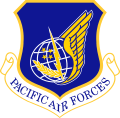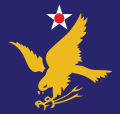| 543rd Intelligence, Surveillance and Reconnaissance Group | |
|---|---|
 | |
| Active |
|
| Country | |
| Branch | |
| Type | Dependant group |
| Role | Intelligence and cryptologic operations |
| Part of | 70th Intelligence, Surveillance and Reconnaissance Wing |
| Base | Joint Base San Antonio–Lackland, Texas |
| Nickname | Warrior scouts [1] |
| Motto | Archez bien (French for 'Shoot well') (World War II) |
| Decorations |
|
The 543d Intelligence, Surveillance and Reconnaissance Group is an intelligence unit of the United States Air Force. It is located at Joint Base San Antonio, Texas. It has been located there since 1997, when it was activated as the 543d Intelligence Group. It focuses on cryptography operations and signals intelligence.
Contents
- Mission
- History
- World War II
- Korean War
- Intelligence operations
- Lineage
- Assignments
- Components
- Stations
- Aircraft
- Awards and campaigns
- See also
- References
- Notes
- Citations
- Bibliography
- External links
The group's earliest predecessor was established in June 1942 as the 3d Photographic Group. After training in the United States, the group deployed to the Mediterranean Theater of Operations, where it performed reconnaissance missions, primarily for Twelfth Air Force, earning a Distinguished Unit Citation for its support of Operation Dragoon. After the surrender of Germany, the group was inactivated in Italy in September 1945.
The second ancestor of the group is the 543d Tactical Support Group, a United States Air Force unit that fought in the Korean War under Fifth Air Force. The 543d was established in September 1950 to control tactical reconnaissance units operating in Korea. In February 1951, the group was inactivated and replaced by the 67th Tactical Reconnaissance Wing and its subordinate units transferred or replaced by units of the 67th Wing.







